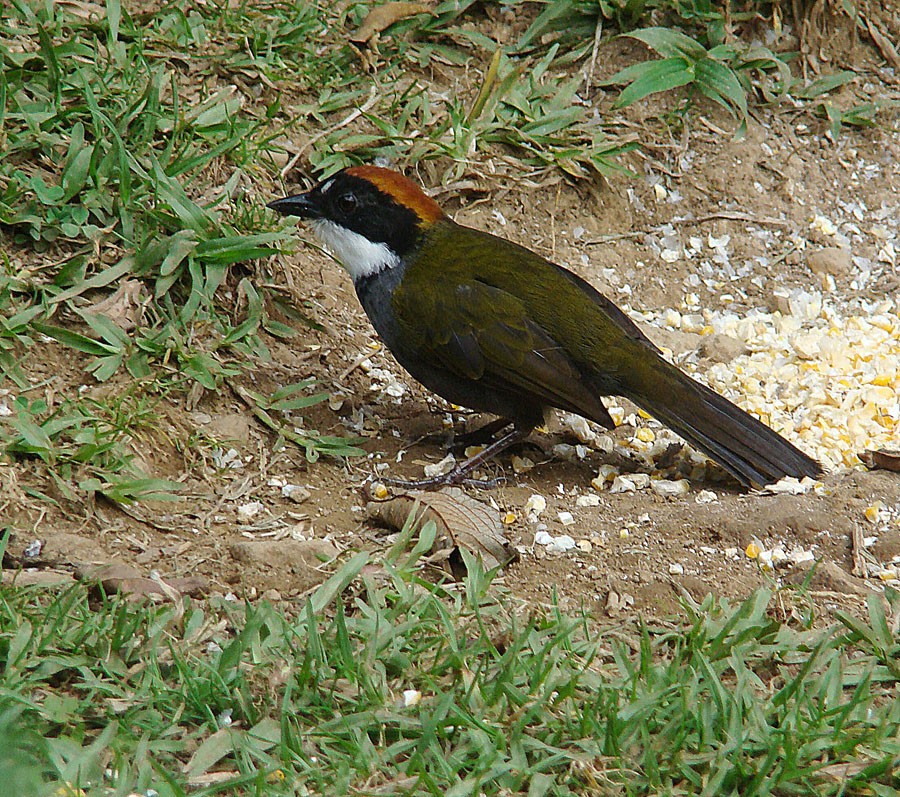Chestnut-capped Brushfinch
A species of Arremon Brush-finches and Sparrows Scientific name : Arremon brunneinucha Genus : Arremon Brush-finches and Sparrows
Chestnut-capped Brushfinch, A species of Arremon Brush-finches and Sparrows
Botanical name: Arremon brunneinucha
Genus: Arremon Brush-finches and Sparrows
Content
Description General Info
Description
The chestnut-capped brushfinch is a large, robust, mainly terrestrial species, 19 cm long and weighing 45 g. It has a long slender bill and large feet and legs. The adult has a distinctive head pattern, with a yellow-edged chestnut crown and nape, black forehead and head sides, white spots in the centre and each side of the forehead, and a white throat which is often puffed up when the bird is excited. The upperparts are dark olive, with darker wings. The white central breast is separated from the white throat by a black band. The breast sides are grey, and the flanks and lower belly are olive-green. Young birds have a sooty-brown cap, sooty face and olive-brown upperparts, throat and breast. The chestnut-capped brushfinch has a thin pink call and a very high-pitched psssst. The male's song consists of a mixture of whistles and sharper notes. 
Size
20 cm
Nest Placement
Shrub
Feeding Habits
Chestnut-capped Brushfinch predominantly consumes insects and seeds. It forages by hopping on the ground and employing a methodical approach to uncover food. Chestnut-capped Brushfinch exhibits a distinctive preference that reflects its dietary adaptations within its habitat.
Habitat
Chestnut-capped Brushfinch inhabits wet montane and temperate forests. It is common in subtropical forests with rich epiphytic flora and in areas with thickets of oaks, pines, or "cypress" trees. Occasionally, chestnut-capped Brushfinch is found at cultivated field edges and adapts its elevation range when coexisting with similar species.
Dite type
Granivorous
General Info
Feeding Habits
Bird food type
Species Status
Not globally threatened.
Scientific Classification
Phylum
Chordates Class
Birds Order
Perching birds Family
New world sparrows Species
Chestnut-capped Brushfinch 